Antique Toning/Bayon Cambodia Part 1/Combining Images in CS5 Photoshop

|

Quick Click Links
Feature Photograph Bayon Cambodia Combining Images in CS5 Photoshop
Photography News of Interest
Readers Submissions Readers Questions
A Snapshot of Bangkok Images Week in Review
I
nfocus Blog, Expat Photographers
T
Feature Photograph *menu

Canon 1ds Mark II, 85mm F1.2L USM @F11 1/80th ISO 400
This third entry in our series on digital toning will center on what is often referred to as “Antique Toning.” As we’ve previously discussed, digital toning presets are a popular feature set in Lightroom and most imaging software. We’ll be exploring the genesis of the most common toning presets and how they apply to our photography. Check out the first in the series about Cyanotypes , and the second on Sepia.
For over a hundred years before it was called “digital toning” it was known as “chemical toning.” Black and white photography was enhanced by the addition of certain chemicals, and in the case of antique toning this chemical was an inexpensive silver variant. Of course now antique toning is but a preset away.
As always, the big question we deal with currently is when to appropriately use these different types of toning. Antique toning is very friendly in this regard as it lends itself well to a variety of image types. It’s very popular for weddings both for its classy time honored look, and because it helps isolate the subject from the background, giving the effect of reducing clutter and instead focusing on the subjects. This is especially useful when the background has heavy darker colors.
In the image above antique toning mutes the heavy green foliage behind the couple, nulls the bright red of the bridge and the green moss colored water, leaving the newly married couple standing out in the frame. It works and it works well. Better, it’s very popular and well received.

Canon 1ds Mark II, 24-70mm F2.8L USM @F8 1/100th 50mm ISO 100
Another example of using antique toning with a wedding couple. The same variables apply except for the busy background. Even though the background is simple, it’s bright green foliage contrasted sharply with their almost yellow wedding gown/suit. The dirt in the foreground was unsightly and distracting. It was a terrible image in color. Now, with the application of antique toning, you get pleasing colors with the bride and groom standing out from the background with their faces and expressions as the focal point. Timeless.

Canon 5d Mark II, 70-200mm F2.8L IS USM @F8 1/40th 135mm ISO 100
But of course it’s not appropriate for all images as we can see with the lady tending the beach bar. This works much better in color with the clear blue water in the background, the copper colored roof thatching, the colorful bottles, and the brown skinned bartender with the blue blouse.
Give the antique toning a try on some of your images and see if you can find one where it works for you. If you like, send it in and tell me why and we’ll publish it in the weekly column.
Banyon Cambodia, Part 1 *menu
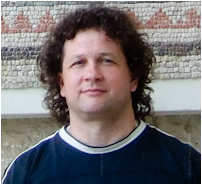
Eyal hails from Israel where he works hard half the year, saving to spend the other half of the year using Thailand as a base to travel throughout South East Asia. Eyal has had a strong interest in submission writing and photography and has corresponded
with me for years, asking questions, taking notes, and working up to this submission. Writing in a second language is never easy, and often it's very difficult. For some of us impossible. To keep such good records and document the trip so
well, and then to put the work in to share with the readers is very much appreciated. I hope to see more of his work grace future columns. You can contact Eyal via email at lotfaifa@yahoo.com
Bayon Cambodia

There is much to write about Bayon. Bayon is an ancient Khmer temple of the Angkor in Cambodia. There are so many pictures I will share here today. I choose to write about one aspect only, conservation and restoration. Often when we visit an archeological site we don't have any idea about what kind of effort was invested in the site, not to mention the expenses, time, and love.




This is the kind of work you do because you really love what you are doing. You endure the hot weather, dust, sand, and the work can be personally dangerous and risky. Working around cranes and ancient buildings which can collapse without warning.




When tourists come to visit these sites they have no concept of what it took to complete the restoration of such a venue. Just imagine what it was like during the period when these buildings were first constructed. We can imagine, but we just can’t fully appreciate the effort.




The people involved in these restorations deserve recognition for their hard work and dedication. Work which takes years to complete, years away from home, years away from family, and years most often spent in tents and the poorest conditions.




Bayon site is unique, a special place like this was built for a king. King Gavaraman the seventh of the ancient kingdom of Cambodia, back when the kingdom was at its peak. The face of King Gavaraman the seventh can be seen from every tower, to the other towers, in Bayon. There are 54 towers, each tower has four faces, and each tower represents a province. 54 provinces, 216 times the face of King Gavaraman the seventh is represented.




On Eyal’s last piece I asked him some questions about his observations on Preah Vihear Temple. He answers them below.
You asked me questions in the submission. I can answer you here:
How recent are these signs and the such are? Is it possible the Khmer government is running a public campaign to publically support their political stance?
I don’t know how recent are these signs, and of course the Khmer Government runs a public campaign. They believe the country is under attack for no reason.
Eyal, I notice all these bills are dated since this conflict has been going on. Do you know if the previous dated bills have the temple on them as well?
I mentioned that 6 years ago I visited Cambodia and there was no 2000 bill at all. Preah Vihear was not on the bank 6 years ago. This means only 2007-2008 the Government here started printing the 2000 note bills.
Eyal, are you saying Thailand has no history in the Khmer culture? There must be some reasoning other than it’s theirs.
The Thai history in Khmer culture is something the Thai’s don’t want to remember. The Khmer army smashed the Thai army completely and they ruled Thailand for quite some time. Until the unexpected happened. The Khmer Kingdom faced serious problems, and it started with extreme weather changes which affected their entire infrastructure system.
This left the Khmer Kingdom in a weakened state. There were floods followed by drought. After a few years the Khmer civilization which was primarily an agricultural civilization couldn’t produce crops or feed its people. This resulted in famine and political unrest and an unstable Government.
Siam Kingdom was based on trade (from the past to present little has changed) This was an advantage compared to the Khmer Kingdom. During this stage the Siam Kingdom had more money and power and the motivation for revenge.
Siam was able to take over large swathes of land from Siam and the capital Ayutthaya all the way to the Khmer capital-Angkor Vat. All this area then belonged to Siam. This situation existed for quite some time, until the Khmer Kingdom made recovery and was able to repel Thai forces from the Angkor Vat area.
As a matter of fact when you mention culture, the Thai’s took/adapted many aspects of Khmer culture and mentioned it like it was Thai culture. There is a long submission about this subject on stickmanbangkok.com somewhere in the readers submission.
The reason is no secret that there are many important people in Thailand who don’t want the next coming election. To keep their politics surviving they try something smart, by involving the country in a war situation to distract the public from normal politics.
Thank you for these answers Eyal. Very interesting. I hope to hear more from you and anyone else knowledgeable on this subject.
Steve
Combining Images in CS5 Photoshop *menu
It’s time for something fun! We’ve had a bunch of equipment reviews and utility tutorials recently, so today let’s do something we can have fun with. Combining images in CS5 Photoshop.
Why? Okay, take the image below:

It’s a product shot from NEC’s catalog. Do you like the image on the monitor? I don’t. How about we make it more topical for a Thailand based photography website? Let’s do it.
First, bring the image into CS5 Photoshop. The first thing we want to know is what size image will fit on the screen. Easy. Use the crop tool to crop out the screen. Accuracy on this step helps the final product look professional.

After cropping the only thing we can see is what was on the screen. Now, go to “image” and then “image size” and we can see the image is 822 pixels wide, and 516 pixels high. That’s the information we needed.

Once your read the numbers, write them down because you’ll need them again, and then hit cancel and back out to the picture. Then go to “edit” and “undo crop.” We’re not back at our original image. But now we know the exact size image that fits on the screen.

This is the Thailand image I want to put on the screen. Bring up your image in another tab in CS5 Photoshop. Now select the crop tool. Along the top feed in the numbers you just wrote down.

Now, simply drag the crop tool along as much of the image that you want to put on the monitor.

Complete the crop and you’re left with the right size image to go on your monitor, and it might be a great deal smaller than you started with, remember, the goal is to match the size of the monitor image.

Drag the tab down onto the workspace so you can see the monitor, and the image you want to put on the monitor.

Select your Move Tool and drag the Thailand image on top of the monitor image.

Release the mouse and the image will be laying on top of the monitor. Now, drag the image into position and center it on the monitor.

This is what the completed image looks like. Make sure it’s properly lined up and looks natural.

Click on “Layer” and then click on “Flatten Image.” The image now combines into a single layer and you’re done.

Much better right? Imagine all the uses you can put this technique to. You can put your wife’s face on a playboy models body (at your own risk), your bosses face on a dogs body, you can add birds to a sky, place a car in a scene, there are many fun uses.
Keep in mind this is a basic technique. It works really well for monitors and rough work, but there are a lot more, and very specific steps, to add new information to a scene and have it look like it really belongs there. We need to be concerned with light direction, shadows, density, feathering, all of which require about a 100 times more skill than this simple technique. But don’t let that stop you from having fun.
One more example.

How many images of a cameras LCD have you seen? Tons probably, and most are boring. Wouldn’t it be a lot more fun if we put a Thailand image on the LCD? Let’s use the same steps above.

That’s better! Much more topical and fun.
I’m sure you can think of lots of ways to have fun with this and you can’t wait to try. So until next time..
Photography News of Interest *menu
Concerning copyright and online piracy, a porn company chooses innovation over prosecution. FINALLY someone with the right idea. It took the porn industry to figure this out? You’ll want to read this.

A photographer combines many tourist images to create a new image. For some reason the article describes these are ‘haunting’ and ‘incredible’, but really other than the images were recognizable at all I think they’re unremarkable. How about you?

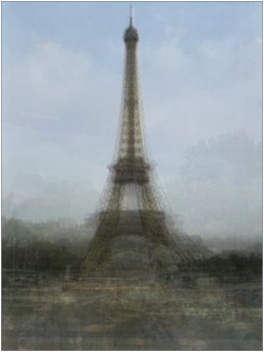
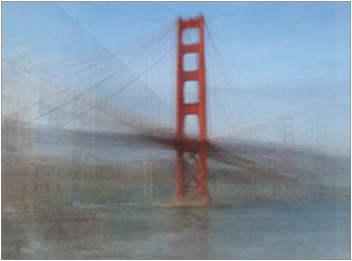
Hasselblad releases a new version of Phocus v2.6 which adds new features such as dust removal, a mobile version, and image rating features.

Nikon releases a new version of Nikon View NX– 2.1.1. which fixes minor bugs and supports new camera models.

Casio releases a new firmware update for their EX-H20G compact, version 1.02. This improves some GPS functions and extends the length of the log.

Ricoh releases a new firmware update for their G700SE digital camera which fixes a fault when using an optional GPS unit and other minor changes.

Dell U3011 Ultrasharp Monitor Review by Kit Guru. Following late on the heels of the well received U2410 and U2711 monitors, the U3011 has been mostly an unknown factor, but highly anticipated. If you’re in the market for a 30” monitor you’ll want to read this review.

Digital Photography Review tests the new Panasonic GF2. This is a much different camera than the GF1, not merely an update. You’ll want to be fully versed in the differences before choosing it over the GF1.

CNET runs an article comparing the cost and features of dual lens DSLR kits. You might be interested if in the market for a lower end DSLR with two lenses.
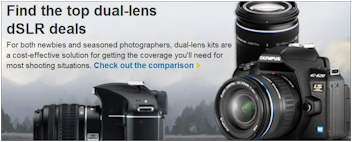
This is an interesting article discussing the challenges of photographing the upcoming royal wedding from a photographers view. If you’ve ever wondered what it would be like to cover such an event, this article will give you some clues.
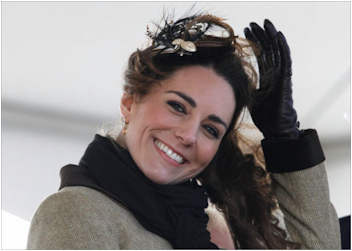
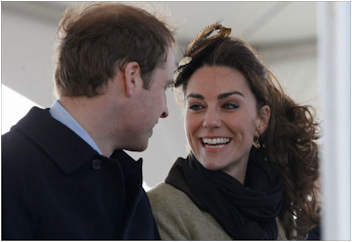
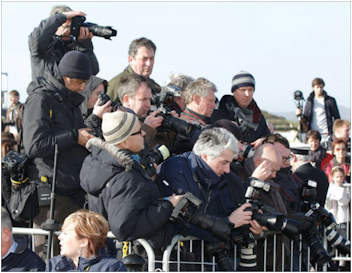
Readers Submissions *menu
There are no readers submissions this week.
I’d like to mention that everyone, myself included, is really enjoying the current trend of readers submissions. Everyone loves them, but remember we can really use more. I have only another week’s worth in my queue, so please take the time to put together a few images and words if you can and send them in. Thank you. info@BangkokImages.com
Readers Questions *menu
Steve:
How do you overcome the heavy haze and smog like conditions found in and around Bangkok when taking you pictures?
I am getting a lot of haze and smog effect (not clear) in the pictures taken here in the San Francisco area. I am also expecting this condition on the trip to China next month.
Do you use various filters on the lens or can it be reduced using Lightroom 3 adjustments?
Any suggestions?
Rickster
Hi Rick –
Ah, I see you’re discovering why this is the worst time of the year to photograph Thailand.. We’ve gone months without serious rainfall or heavy winds which means the pollution has built up and has settled around the city like a heavy cover of sludge.
To be practical there isn’t a filter in the world that will break through this mess, much less make it disappear from your photos.
For light haze I find UV filters work better on this side of the world, while Skylight 1b’s work best in North America. This is a personal choice/observation. What these filters really do is provide a bit more contrast in the wavelengths the colors of haze generally appears in, but they serve best in a protection role.
This is where having your cloud and sky library comes in handy, as well as knowing how to process in a different sky.
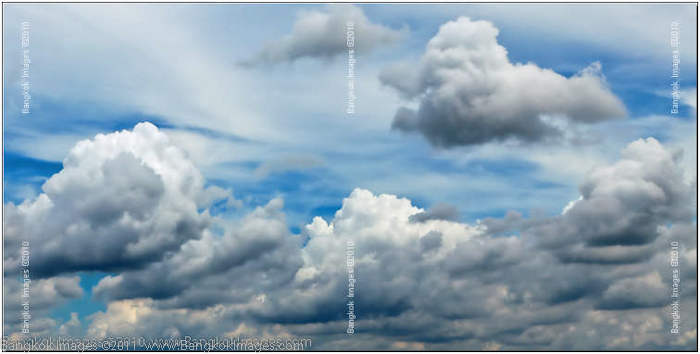
Not to worry, by July the monsoon season will be in effect and wash the pollution away revealing blue clear skies and great cloud formations..
I’m sorry I haven’t been of much help.
Steve
Please submit your questions to info@BangkokImages.com All questions will be answered and most will show up in the weekly column.
A Snapshot of Bangkok Images Week in Review *menu

This week was fun, the parrot sanctuary trip was delayed again this week until March 7th. I hope to visit then and bring you a report.
Positive comments continue to pour in about our new look and much faster more interactive site. If you haven’t already checked it out, visit www.bangkokimages.com
to see my latest galleries
, share your own galleries
, participate inthe forums
, and scour our large repository of photography related articles
. The “What’s New”
page continues to be very popular with almost daily updates and interesting content.
The Readers Submissions queue is now officially empty. If you have any images you’d like to share please send them in. If you think you have material for a feature contact me and I’ll do what I can to help you put it together. Your contributions
are appreciated by everyone.
Dana turned in another Thailand Photo Stories titled “CAMERA TROUBLES” which is a thought provoking but humorous piece. You’ll enjoy it.
I put up two more galleries, the Navy Boat Yard in Samut Praken, and a gallery from the Eric Clapton Bangkok 2011 concert this last week. Check them out and take notice of the full screen view where you can see the images at a much larger size.nfo
Infocus Blog, Expat Photographers *menu

Most photographers are a technical bunch, when they click on a link to a website they expect to see charts, graphs, the results of testing, and enough technical gibberish to require three special dictionaries. Don’t dare write a piece with levity,
humor, or especially satire because they’ll take it as a personal affront. In their eyes if you can’t regurgitate the specifications for the 10 most popular professional cameras then you’re not a serious photographer. You’re
a clown, a hack, someone to be avoided at all costs. Lock up the kids!
But you guys are different. To you photography is fun, a way to document your travels and share them with your family back home. You wouldn’t be caught dead reading a technical website because that would suck all the fun out of your beloved hobby.
When you take a ‘photography workshop’ technical stuff is then okay, but what you really came for was the fun and to meet and learn about other guys just like you. You know who you are. You’re expatriate photographers.
Expatriate photographers in Thailand have completely different priorities. Normal photographers have maybe one really fast lens. You guys own them all, the faster the better. Low light capabilities are a serious priority because all the fun stuff in Thailand
happens at night. You know what I mean. Where else can you photograph elephants, katoey’s in drag, a legless one armed beggar dragging himself down the soi, and the most strange bunch of tourists anyone has ever seen, all without moving
from the same barstool? Only in Thailand!
When normal photographers pack their camera bags: in addition to cameras and lenses, they pack filters, cleaning brushes, microfiber clothes, and extra body caps. You guys pack the bare minimum of equipment, toilet tissue, several towels for wiping sweat,
mosquito repellant, Imodium D, and an extra copy of your passport just in case. You know what you’ll need here and you’re better prepared than an Eagle Scout. You have a SIM refill card in your wallet and extra baht in your shoe.
You’re an expat photographer.
Regular photographers are usually tourists and carry phrase books and wear loud shirts and silly ball caps requested by your tour director. Expats dress like locals, speak the lingo, and would rather be kissed by Oprah than be part of any tour. We know
the skytrain schedule by heart, which number buses go where, the best places to eat, and we avoid tourists like the plague.
Tourists filter off the buses in great numbers, line up side by side, and take 200 images of the same thing. Usually a temple. It takes them a few months after returning home and examining their 5000+ images of temples to realize they pretty much all
look alike. Expat photographers take pictures of tourists taking pictures of temples because it’s funny. Especially if they’re soaking wet with sweat and still wearing a sweater because they thought 42 degrees was in Fahrenheit.
Expat photographers cue not on temples, but on the people visiting the temples, on the locals, monks, curious children, and any soi dog clever enough to con a tourist into feeding them their sticky rice.
Expat photographers don’t click on a link to read technical data. They click on a link to be entertained. Don’t tell us the technical specs of your camera, instead show us how well it works capturing interesting characters on Soi Cowboy.
We know a camera takes pictures, so when we click on your site tell us a funny story or show us a picture of a pickup truck with 12 members of the family, all in the back seat! Don’t show us a meditating monk, instead show us a picture
of a fake monk being chased down the street getting his robes ripped off by the good doctor. Now that’s funny!
Regular tourist photographers go to places like the zoo and take pictures of monkeys and signs misusing English. Expat photographers would rather go to the Nana parking lot and take pictures of drunk punters and the latest in tourist fashion accessories.
If we get lucky, we’ll spot a tourist wearing a thick gold chain, a speeding motorsai, and get a picture of the now bare necked tourist running down the street after the motorsai shouting in French, German or Caveman.
We’ve learned how to anticipate typical tourist behavior and can instinctively set ourselves up for the best shots. It might be the western female tourist walking past a temple with her bikini riding up her rear, or the huge bellied shirtless male
tourist in shorts arguing with the guard at the Grand Palace. For fun we might sit outside MBK and photograph the natural interaction of two interesting species, the tourists and the litter police.
When expat photographers click on a site they’re not looking for the local news. What they’re looking for is the latest exchange rate and to see how hot it’s going to get that day. If there’s a 2-1 special for lunch at the
local pub so much the better. We’re not interested in tourist activities, we’re interested in all the stuff tourists can never dream about seeing. We’re hardened, we’re cynical, we’ve seen it all. We’re
Expat Photographers.
Until next time..




